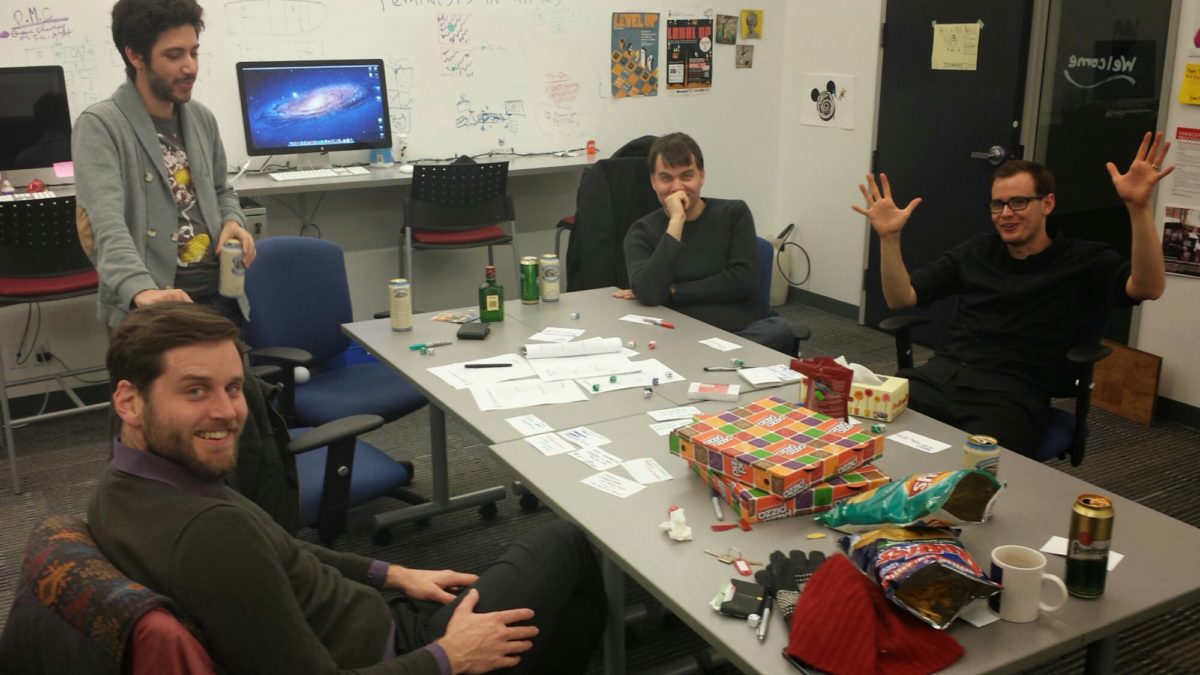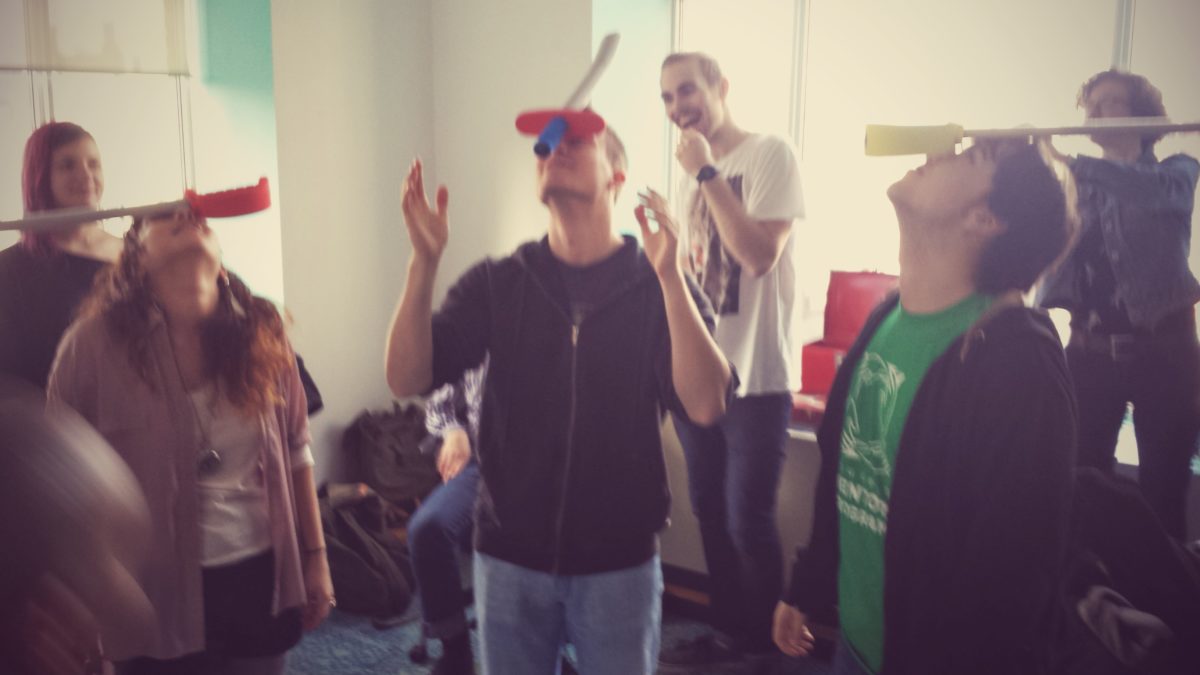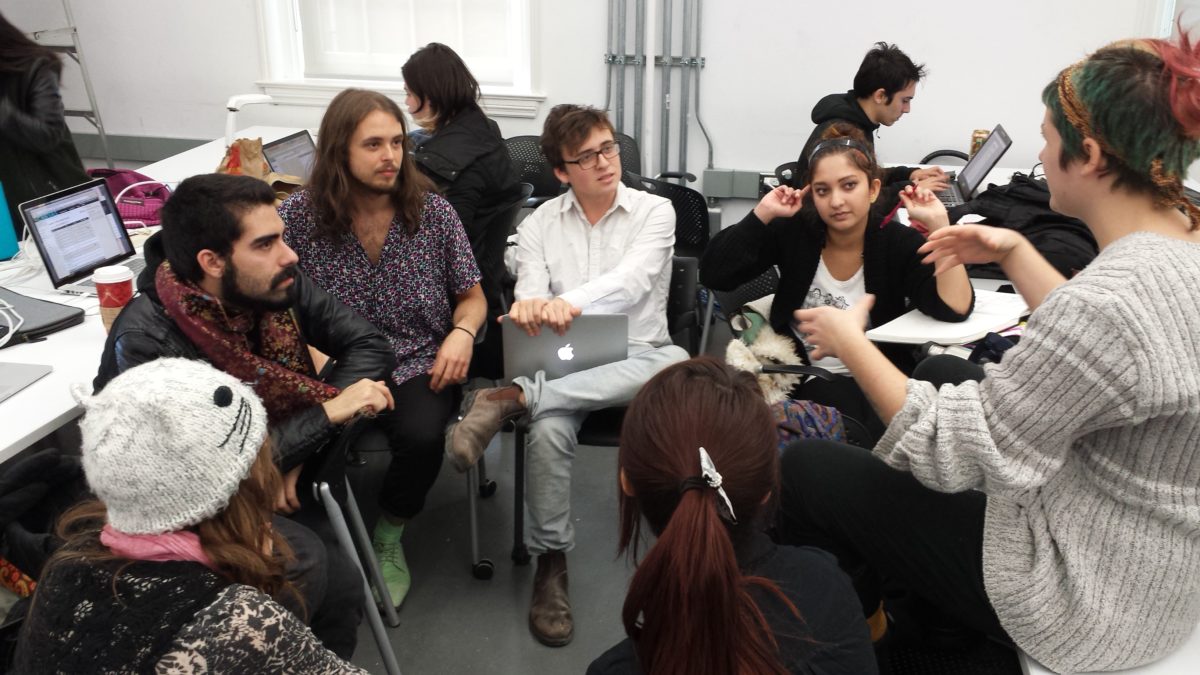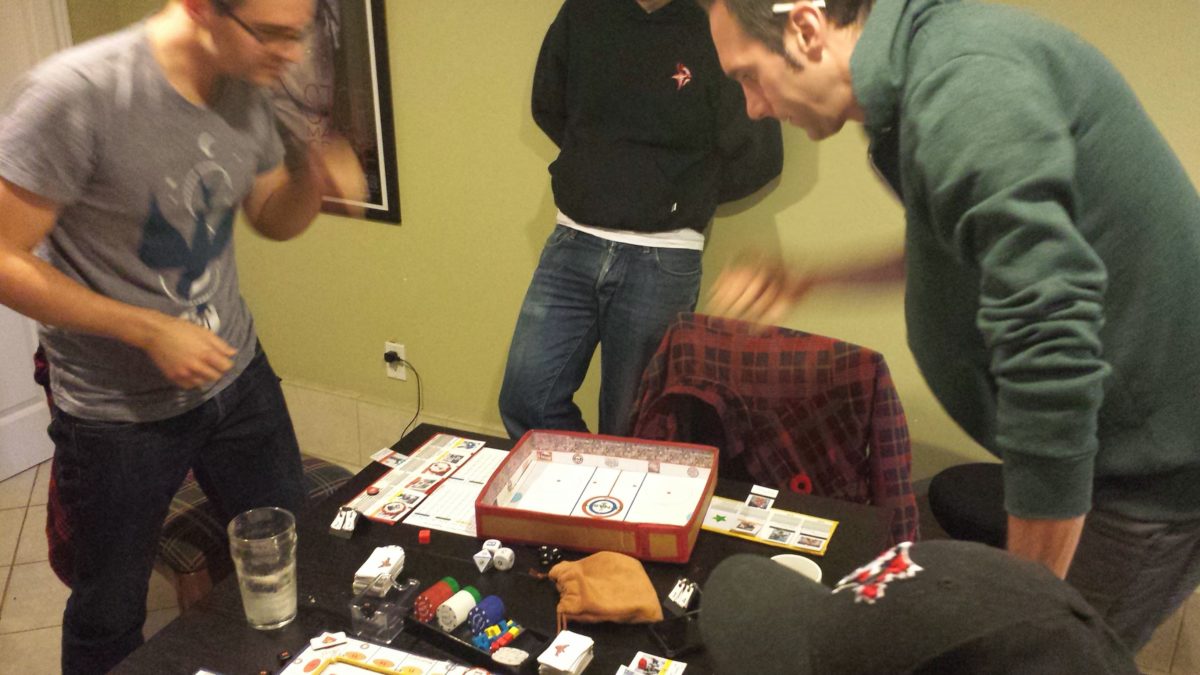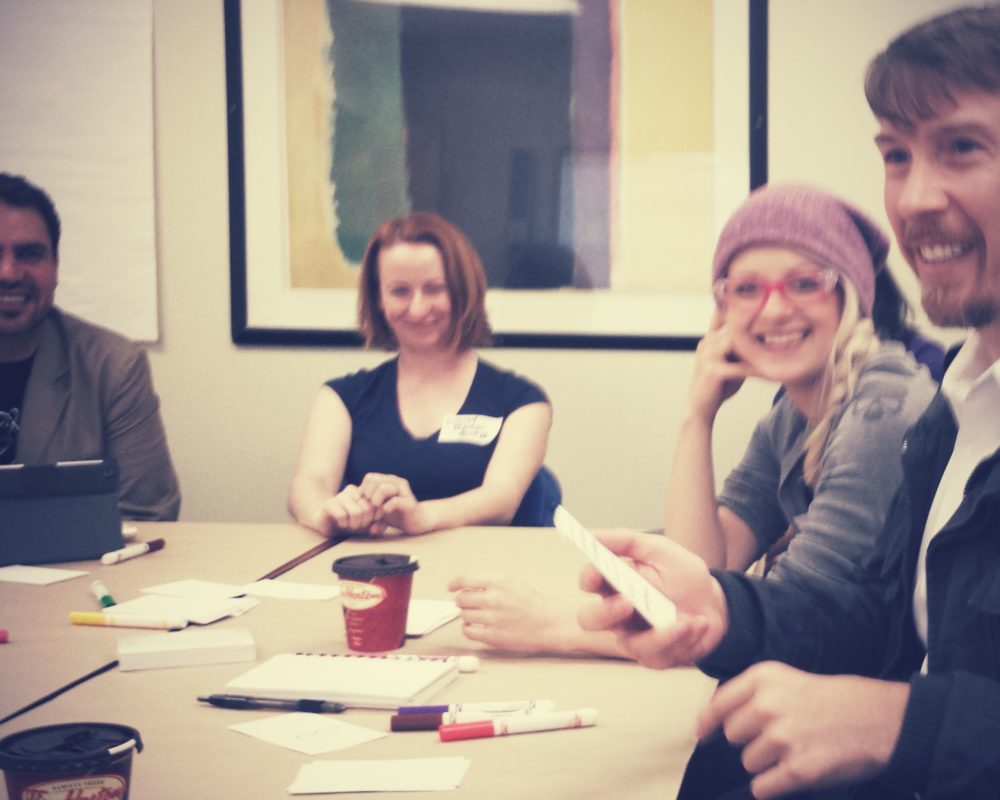About
Jeff Watson is an artist, designer, and Assistant Professor of Interactive Media and Games at the University of Southern California School of Cinematic Arts.
-
Playing Fiasco at The Situation Lab
Posted in Photos
Tagged david fono, fiasco, jim munroe, stuart candy, trevor haldenby
Comments Off on Playing Fiasco at The Situation Lab
“In participatory situations, game structure replaces aesthetics…”
“In participatory situations, game structure replaces aesthetics. Instead of events being worked out beforehand, there is a “game plan,” a set of objectives, moves, and rules that are generally known or explained. The game plan is flexible, adapting to changing situations. . . [In 1969,] I formulated three rules of participation:
- The audience is in a living space and a living situation. Things may happen to and with them as well as ‘in front’ of them.
- When a performer invites participation, he must be prepared to accept and deal with the spectator’s reactions.
- Participation should not be gratuitous.”
– Richard Schechner, Environmental Theater. Applause Books, New York, 1973. 78.
Posted in Quotes
Tagged audience, game design, participation, performance, richard schechner, theatre
4 Comments
“Living systems are cognitive systems…”
“A cognitive system is a system whose organization defines a domain of interactions in which it can act with relevance to the maintenance of itself, and the process of cognition is the actual (inductive) acting or behaving in this domain. Living systems are cognitive systems, and living as a process is a process of cognition. This statement is valid for all organisms, with and without a nervous system.”
Posted in Quotes
Comments Off on “Living systems are cognitive systems…”
FPOU: a comic provocation about the future of postsecondary education
This faux infomercial, currently airing without disclaimer at 4am on US cable network Adult Swim, takes some smart and merciless shots at MOOCs, gamification, and, of course, for-profit online “universities”. The level of detail here is impressive: pausing reveals hilariously complete mockups of user interfaces for things like managing “ThoughtCoins”, reporting other students for fraud, customizing shoddy Second Life-style virtual classroom avatars, and cashing in academic credits for sandwiches. “Whenever I want to learn something,” exclaims one of the breathless interview subjects, “I just buy some more ThoughtCoins and download some more facts.” The dystopia implied by the satire here should serve as a cautionary touchstone for anyone interested in exploring the roles privatization and technology will play in the future of education.
Created by Wild Aggressive Dog.
Hat tip: Sarah Brin.
Posted in Blog
5 Comments
Atelier I end of semester hijinx
Posted in Photos
Tagged adam tindale, atelier, digital futures, ocad, simone jones, tangent
Comments Off on Atelier I end of semester hijinx
Brainstorming session in the Digital Futures Atelier
Posted in Photos
Tagged atelier, digital futures, ocad, tangent
Comments Off on Brainstorming session in the Digital Futures Atelier
“The rules just kind of got there…”
“The rules just kind of got there. They don’t make any kind of sense except in terms of themselves. But when you start to exercise those rules, all sorts of processes start to happen and you start to find out all sorts of stuff about people. In astrology the rules happen to be about stars and planets, but they could be about ducks and drakes for all the difference it would make. It’s just a way of thinking about a problem which lets the shape of that problem begin to emerge. The more rules, the tinier the rules, the more arbitrary they are, the better. It’s like throwing a handful of fine graphite dust on a piece of paper to see where the hidden indentations are. It lets you see the words that were written on the piece of paper above it that’s now been taken away and hidden. The graphite’s not important. It’s just the means of revealing their indentations. So you see, astrology’s nothing to do with astronomy. It’s just to do with people thinking about people.”
–Douglas Adams, The Hitchhiker’s Guide to the Galaxy (via Kars)
Gamification: Don’t say it, don’t do it, just stop
This post originally appeared on MediaCommons, as part of a series on gamification.
I think it’s time we had a frank talk about what gamification is, and why we should stop doing it — or at least, why we should agree that if we’re not going to stop doing it, we ought to stop calling everything that involves real-world game design by that name.
Gamification as formulated by its proponents — let’s thumbnail it as, “the application of points and badges and other representations onto real-world behaviors under the assumption that doing so will ‘incentivize’ or motivate certain actions” — is anti-human. It’s about closing down possibility rather than opening it up. When “successful” (which, to be sure, it often is not), it amounts to a sleazy kind of behavioral control system. Population control is anathema to what games are, or have been, or ever will be.
A true game is a set of rules and procedures that generates problems and situations that demand inventive solutions. A game is about play and disruption and creativity and ambiguity and surprise. A game is about the unexpected. Gamification, on the other hand, is about the expected, the known, the badgeable, and the quantifiable. It is about “checking in” and being tracked. It’s not about breaking free, but rather about becoming more regimented. It’s a surveillance and discipline system — a wolf in sheep’s clothing. Beware its lure.
Of course, if your goal is to create compliant employees, students, consumers, or citizens, then maybe gamification is for you. What better way to hammer home the idea that innovation, intellectual development, identity, and citizenship consist of doing what one is told and checking off boxes than by, well, “rewarding” people for doing what they’re told and checking off boxes? This is the essence of gamification: here are X number of things that you can be rewarded for doing. Now do them. Your activity will be monitored, and you will be credentialed accordingly.
In education, gamification is the hellspawn of No Child Left Behind and other kinds of quant-led learning policies. It posits that the main role of the educator is to identify a finite set of things that students ought to learn and do, and then to make them learn and do those things by whatever means necessary. If trickery is involved, then so be it. The principal “trick” gamification deploys is to make the tasks it seeks to support feel like game activities by using scorekeeping metaphors drawn from videogames and role-playing games to track completion. But aside from superficial similarity, is this approach really any different from handing out As and Bs, certificates and diplomas, GPAs and SAT scores?
Make no mistake: gamification — for we must differentiate it from game design proper, else the term is meaningless — is a credentialing system, and while it sometimes poses as a way of honoring and acknowledging informal learning, what it really amounts to is an extension of the formal into the realm of the informal. It is not concerned with teaching learners how to learn, but rather shockingly exclusively with offering them a set of discrete objects that they must accumulate (in part or in whole) in order to be credentialed. This is not a recipe for creating the kinds of creative problem-solvers our civilization needs. This is a recipe for creating rule-followers who are more concerned with optimizing their badge collections than with truly exploring and engaging with the world in which they live.
So just stop. End this dark chapter, this Frankenstein perversion of all the beautiful and liberating things that games can do. Refuse the marketing pitch. If you want to design games to make your school or city or country a better place, then do it — design games and change the world. But don’t do gamification. It’s bad for people. And if you’re an acolyte who just won’t let go, then at least do the rest of us a favor and keep your dirty word to yourself.
Posted in Blog
Tagged achievements, bad ideas, badges, education, gamification, mediacommons
6 Comments

